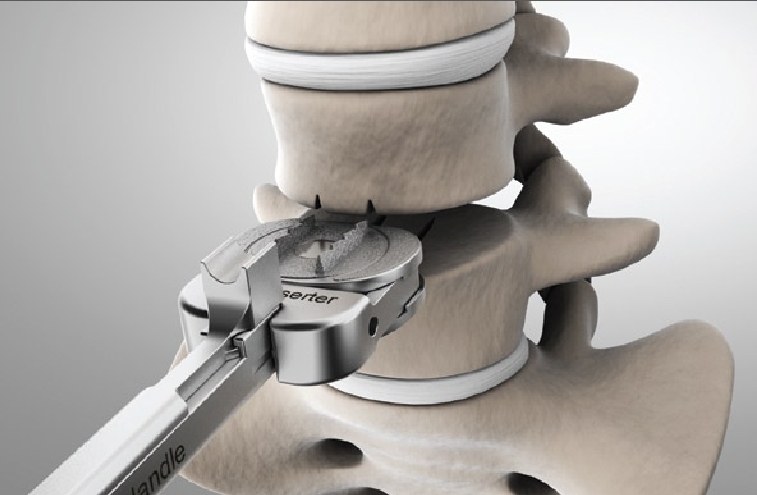Case Reports
doi: 10.3390/medicina59050956.
Affiliations
Affiliations
- 1 Department of Orthopedic Surgery, China Medical University Hospital, Taichung 404327, Taiwan.
- 2 Spine Center, China Medical University Hospital, No. 2, Xueshi Rd., North Dist., Taichung 404327, Taiwan.
- 3 Department of Orthopedic Surgery, China Medical University Beigang Hospital, Yunlin 651012, Taiwan.
- 4 Graduate Institute of Precision Engineering, National Chung Hsing University, Taichung 402204, Taiwan.
Item in Clipboard
Case Reports
Pang-Hsuan Hsiao et al.
Medicina (Kaunas).
.
Display options
Format
doi: 10.3390/medicina59050956.
Affiliations
- 1 Department of Orthopedic Surgery, China Medical University Hospital, Taichung 404327, Taiwan.
- 2 Spine Center, China Medical University Hospital, No. 2, Xueshi Rd., North Dist., Taichung 404327, Taiwan.
- 3 Department of Orthopedic Surgery, China Medical University Beigang Hospital, Yunlin 651012, Taiwan.
- 4 Graduate Institute of Precision Engineering, National Chung Hsing University, Taichung 402204, Taiwan.
Item in Clipboard
Display options
Format
Abstract
Background: Spinal fusion is a common surgery, in which vertebrae are fused to restore spinal stability and eliminate pain during movement. The use of an interbody cage facilitates spinal fusion. However, complete cage migration into the dura matter rarely occurs and can be challenging to manage. Case Presentation: A 44-year-old man presented at our spine center with a history of incomplete paraplegia and cauda equina syndrome that had lasted for 2 years and 4 months. This condition developed after he underwent six lumbar spine surgeries to address lower back pain and right-sided sciatica. A structural allograft kidney-shaped cage was found completely within the dura at the level of the L3 vertebra. Durotomy, cage retrieval, and pedicle screw fixation from the L2 to L4 vertebrae were performed. Numbness in both lower limbs markedly decreased within several days of the operation. After four months following the progressive physical therapy, the patient could partially control both urination and defecation. Five months postoperatively, he could stand with slight assistance. Conclusions: Complete intradural cage migration is a rare and serious complication. To the best of our knowledge, this is the first reported case with such a condition in the literature. Even if treatment is delayed, surgical intervention may salvage the remaining neurologic function and may even lead to partial recovery.
Keywords:
case report; cauda equina syndrome; intradural cage migration; lumbar spine surgery; paraplegia.
Conflict of interest statement
The authors declare no conflict of interest.
Figures

Figure 1
Lumbar spine radiographs taken at…
Figure 1
Lumbar spine radiographs taken at our center. ( A ) The anteroposterior view…
Figure 1
Lumbar spine radiographs taken at our center. (A) The anteroposterior view revealed pedicle screw fixation from the L2 to L3 vertebrae, one allograft cage in the L3–4 disc, two metallic interbody cages in the L4–5 disc (red arrow), and, unexpectedly, one foreign body (yellow arrow) with bone density in the spinal canal at the L3 vertebral level. (B) The lateral view revealed the shadow of a foreign body cage in the spinal canal at the L3 vertebral level (yellow arrow). Loss of lordosis is also observed.

Figure 2
( A ) Magnetic resonance…
Figure 2
( A ) Magnetic resonance imaging confirmed one interbody cage (yellow arrow) within…
Figure 2
(A) Magnetic resonance imaging confirmed one interbody cage (yellow arrow) within the intradural region at the L3 vertebral level, with irregular contours and focal dural thickening. Clumping of the nerve roots was also observed. (B–E) The axial views corresponded to dotted lines in (A).

Figure 3
( A ) Spinal durotomy was performed with the aid of an operating…
Figure 3
(A) Spinal durotomy was performed with the aid of an operating microscope at the L3 vertebral level, and the cage (yellow arrow) was found within the dura. To tack the dural edges, 6-0 Prolene sutures were used. (B,C) The cage was carefully retrieved with grasping forceps.

Figure 4
The urodynamic study showed decreased…
Figure 4
The urodynamic study showed decreased urinary flow rate below two standard deviations.
Figure 4
The urodynamic study showed decreased urinary flow rate below two standard deviations.

Figure 5
( A , B ) The immediate postoperative anteroposterior and lateral views revealed…
Figure 5
(A,B) The immediate postoperative anteroposterior and lateral views revealed extended pedicle screw fixation to L4 vertebrae, with the removal of the intradural interbody cage. (C,D) After a year, the follow-up radiographs revealed no signs of implant failure or loosening.
References
-
-
Wood K.B., Schwender J.D. Lumbar intervertebral cages: Limitations and complications. Oper. Tech. Orthop. 2000;10:320–324. doi: 10.1016/S1048-6666(00)80032-4.
–
DOI
-
Grant support
This research received no external funding.

